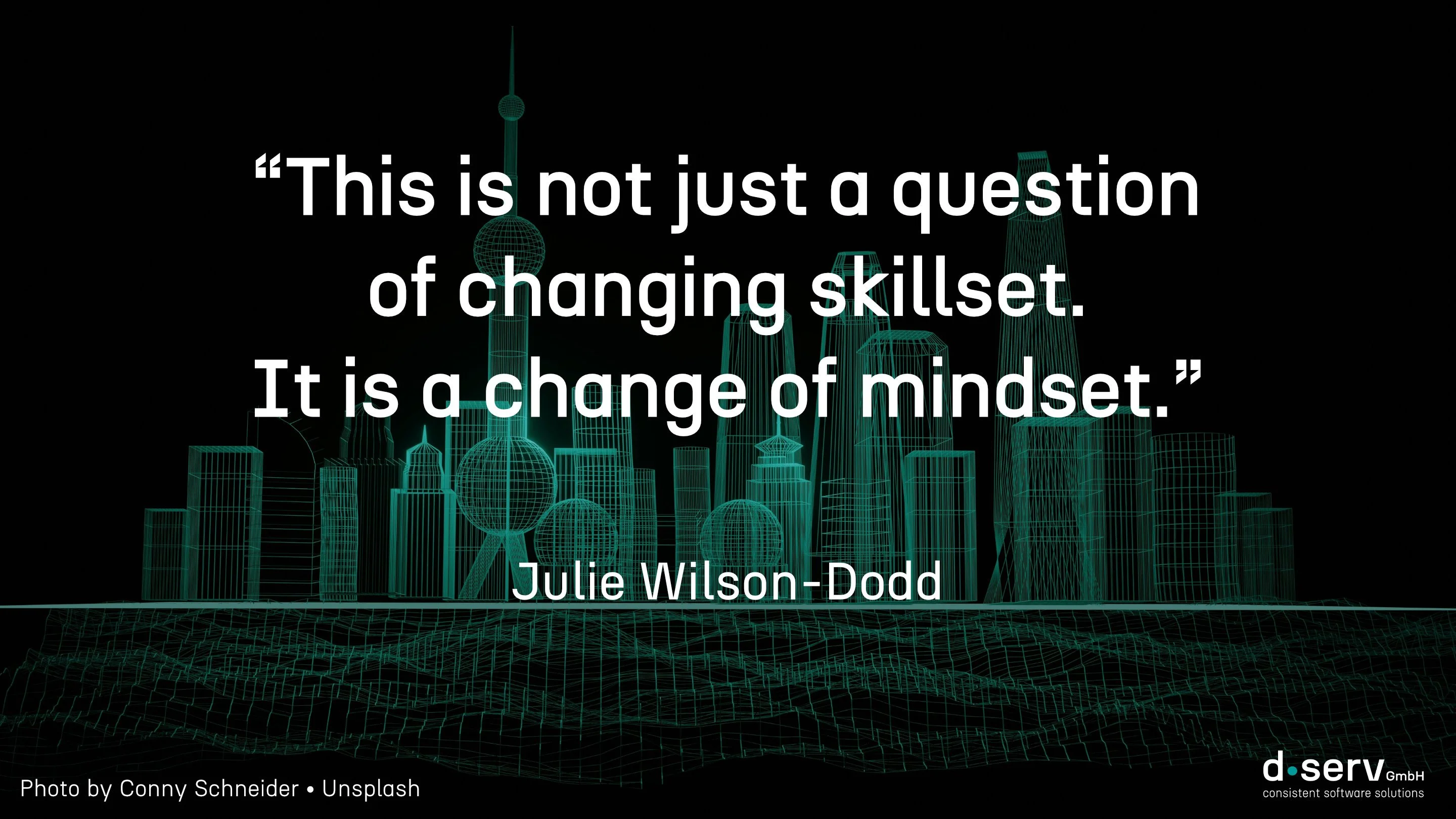Digital transformation • Pros and cons under discussion
2018-10-31
Representing d-serv GmbH, its managing director Pietro Triscari has been active on the member board of the »Special Interest Group (SIG) Creative Industries« for a good two years. As one of the responsible organizers in this SIG of Baden-Württemberg: Connected (bwcon), he and his fellow campaigners are primarily concerned with topics that concern the creative industries and with offering opportunities for a mutual exchange of knowledge and experience.
The third event of SIG Creative Industries on October 17, 2018 led around 50 participants to the exhibition »Almost Alive« and the cafe of the Kunsthalle Tübingen. All participants received a guided tour by Dr. Nicole Fritz and were then able to listen to two lectures, one by Peter Moos and one by Michael Marek, in order to then discuss the topic "The underestimated factor in digital change - the human being" in a controversial and constructive manner.
Nicole Fritz offered the participants expert and exciting insights into the impressive art of "hyperrealistic sculptures". The exhibition has already ended at the time of this post, but some more information can be found on the Kunsthalle Tübingen website.
Against the background of his own experiences from his daily work, Peter Moos reported on how people fundamentally face upcoming changes. In many places and in numerous organizations, the "digital change" is also a welcome occasion for the "change" formulated in modern German - if this change also requires changes from the individual people in their daily work, the level of enthusiasm weakens.
Michael Marek showed that the implementation of software-dominated products, which often goes hand in hand with the "digital transformation" on the part of companies, should not take place without intensive communication. Familiar communication measures and means should be checked and critically questioned and possibly replaced by interactive communication methods that involve the people concerned at an early stage. In his opinion, numerous “result types” that are obtained with the help of methods from usability engineering, user experience design and human-centered design offer helpful, formal and content-related support.
In the subsequent discussion, the views and arguments presented were largely agreed. However, there were differing opinions as to whether the already obvious changes brought about by "digital change" or "digital transformation" should be accepted or rejected. In the opinion of most of the participants and the speakers, the "digital transformation" can neither be faced with thoughtless approval nor with fundamental rejection: The point is to name the consequences of these changes and to offer solutions for those who will be disadvantaged by these changes. However, most of the participants considered it unrealistic and a threat to business to assume that the software and media industry, which has already been completely transformed by US companies, or the energy industry and automotive industry, which are also affected by climate change and the energy transition, can or should avoid the opportunities and risks of a "digital transformation".